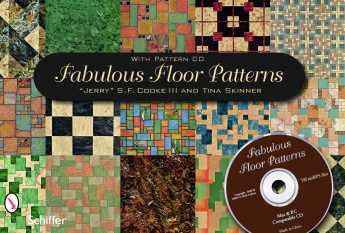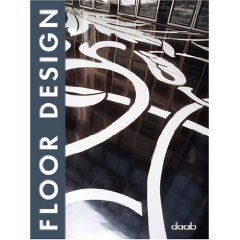Green: Laminate
Laminate: Inherently Easy on the Environment

Mannington’s Elmhurst, shown here in Alabaster, is a perfect example of how laminate can give consumers a unique look to the floor since as a wood species Elm would not be considered a good flooring option due to its Janka hardness rating.

Beyond just wood species, laminate flooring products can pick up on today’s trends such as the soft-scraped distressed look as seen here in Quick•Step’s Sculptique collection.

Walnut is one of today’s most popular wood species and manufacturers such as Shaw can create the look of the real thing down to the tiniest of details in laminate flooring, such as Brookdale Walnut from its Natural Values II collection.



Being environmentally conscious is more than a fad. It’s becoming a life choice for many Americans and for most it means more than simply recycling their newspapers, plastic bottles and aluminum cans, or carpooling. Being mindful about every product used is becoming the norm.
And, choosing a product for home projects that is proven to be environmentally friendly is also a common practice. So when your customers are considering the environmental impacts of their next flooring purchase, make it a point to show them your laminate offerings because this product has plenty to offer when it comes to being green.
Laminate flooring is inherently eco-friendly but not all products make the cut. That’s why the North American Laminate Flooring Association (NALFA) has included environmental standards as part of the organization’s certification process.
When you see the NALFA Certification Seal, you know it is proof that a laminate floor is sustainable. But what makes it so environmentally friendly? From its production to the installation and maintenance, laminate flooring is a quality, durable product that is easy on the environment, and your conscious.
Laminate flooring consists of four layers that have been bonded together with the use of heat and pressure. The product is made from a high-recycled content core that is also rapidly renewable. The core material in laminate flooring is comprised of fast growth and/or in many cases recycled wood material.
The materials comprise upwards of 70% recycled materials including pre-consumer (post-industrial) wood waste. Reusing this waste keeps it out of the landfill or from being burned in a manner that negatively affects air quality. Some NALFA members also use excess material in a responsible way as a heat or power source thereby further reducing the environmental impact.
The following are some of the many reasons why laminate is a great choice for end users who are seeking an environmentally friendly floor covering that is also durable enough for their lifestyles while still being on-trend with today’s styles and fashion:
•Laminate is bio-based and recyclable. The majority of the composition of laminate is wood fiber, a renewable and bio-based raw material. Unlike other flooring types, which rely primarily on petro chemicals, laminate uses an almost infinitely renewable resource.
Add to this the fact that when you replace a laminate floor, it can be recycled with other wood fiber based products. Some manufacturers and consumers actually reuse their laminate when they move homes by taking their floor with them. That is not possible with most flooring types.
•No rare or exotic species are used in production. Laminate simply creates the look of a natural resource—such as wood or stone—as opposed to actually using it. NALFA members, as well as other manufacturers, use state-of-the-art graphics to reproduce a wide range of looks from exotic woods to rare or extinct species, to more common types like maple.
Laminate flooring’s appearance is actually a high-definition photograph, so it can provide the desired look without the sacrifice of a natural resource. And, because of this, it can even provide the look of things that normally would not be considered good flooring material because they are too soft, too expensive, too difficult to handle or, as noted above the wood species is extinct, meaning it can only be “used” via a high-definition image.
•Laminate is designed with water-based, low VOC ink. One of the four layers of laminate is a decorative paper layer. Many of our manufacturing members use water-based, low VOC inks in the design of their laminate products.
These inks are safer for consumers and the environment.
•No harmful glues are used for installing laminate floors. Because laminate flooring is made from natural cellulose fibers, the material will expand and contract with changes in humidity. Designed with interlocking tongue-and-groove connections, laminate flooring is not meant to be attached to the subfloor. Instead, it sits on top of it, enabling it to move with changes in the humidity.
The locking systems used for installing laminate flooring eliminate the introduction of VOCs from certain glues and other sealers. Seams lock into place for a tight fit, and harmful volatile organic compounds (VOCs) aren’t at risk for escaping into the air.
•Responsible packaging. Many of our manufacturing members use recycled materials for the packaging of their laminate products.
Additionally, laminate planks are sold in strips or tile form that are much shorter and easier to package than some other materials. Laminate flooring strips can be four feet long versus the eight- to 10-foot long planks of other products that require much more packaging.
•No harsh chemicals needed for cleaning and maintenance. Laminate is naturally resistant to the growth of mold and bacteria so no harsh chemicals are needed for cleaning laminate floors.
Sweeping and light mopping will keep the floors looking great. Also, the floors will not need to be refinished; therefore reducing the VOCs found in some finishes.
•Laminate floors are long lasting. Laminate floors are durable, which reduces the need for replacement, and with the easy locking systems used on them, they can be removed and reused in another part of the home or even donated to your favorite charity. In fact, several of our manufacturing members encourage residential re-use of their products.
•Green Association recognition. NALFA member products are recognized by many green certification programs such as FloorScore, GreenGuard, ISO 14001 for Environmental Management System, PEFC and Green Swan.
Manufacturers that earn these recognitions will generally showcase the logos of the certifications on the back of product samples as well as their packaging, allowing salespeople and end users to easily see.
•All NALFA certified products are CARB 2 compliant. NALFA production meets requirements set forth by the California Air Resources Board (CARB). And because the product is made of recycled components, laminate helps home and business owners meet the U.S. Green Building Council’s (USGBC) Leadership in Energy and Environmental Design (LEED) standards as well as those of a number of other green building rating systems.
Put simply, if you see the NALFA Certification Seal on a laminate flooring option, you can rest assured that you will be giving your customers a responsible and wise choice for their investment, and our environment when choosing laminate.
Bill Dearing is the president of the North American Laminate Flooring Association (NALFA) and currently affiliated with Torlys for its U.S. operations. He was part of the original Pergo flooring team for North America and has spent the majority of his career in consumer products, specializing in launches of predominately European goods into the North American market. To contact him, call (949) 370-5646 or email bill@ecdearing.com.
Looking for a reprint of this article?
From high-res PDFs to custom plaques, order your copy today!








